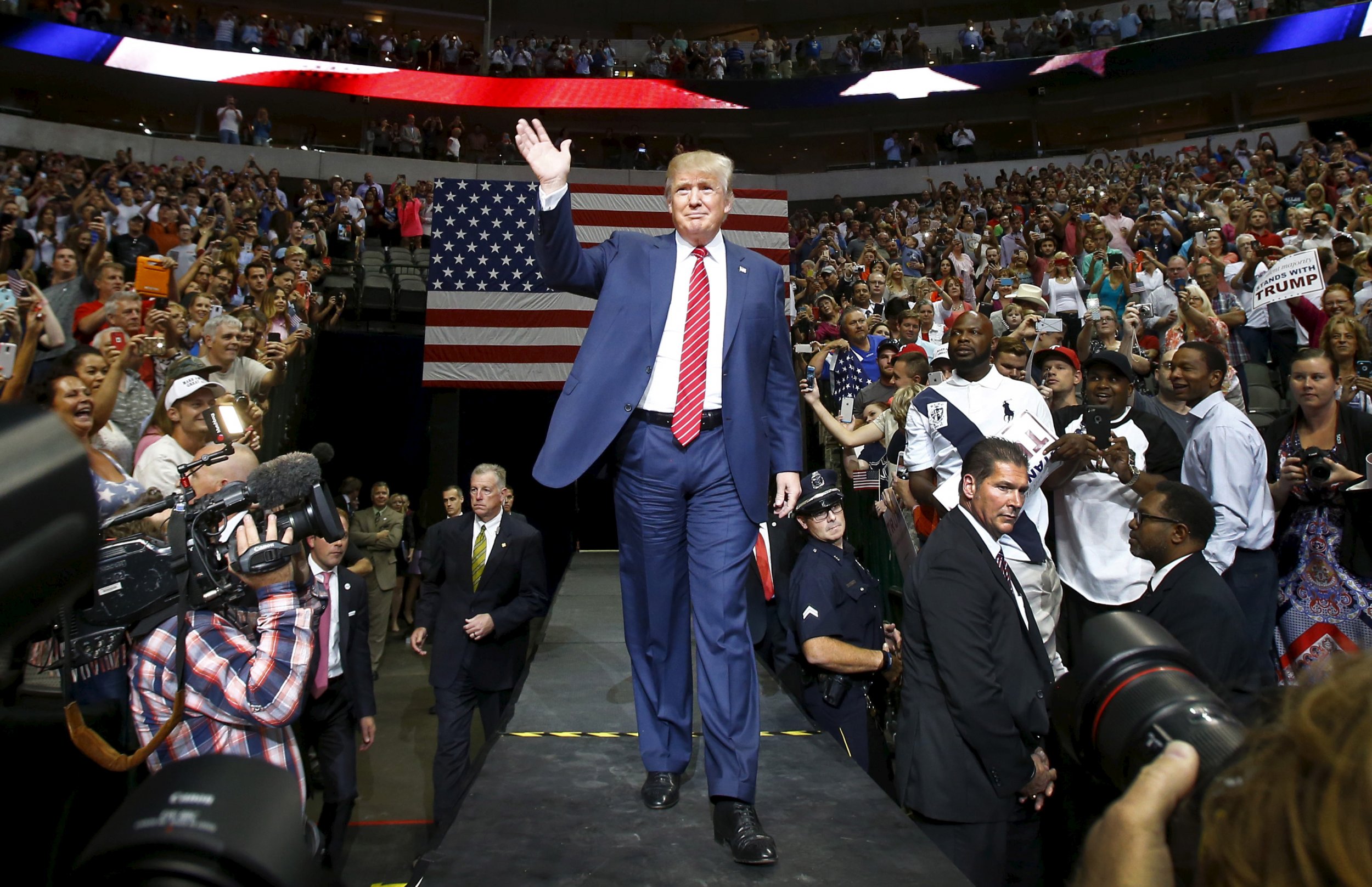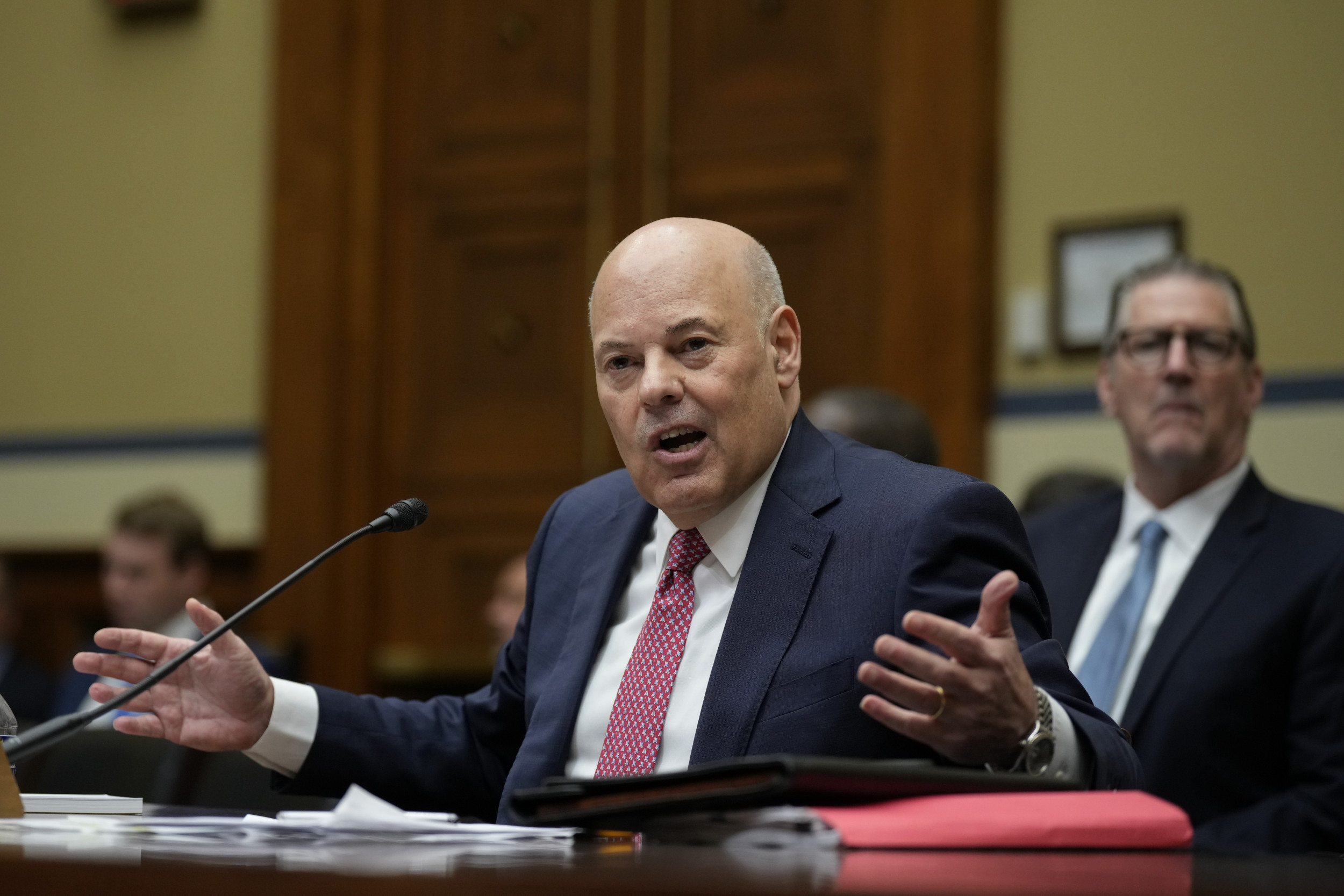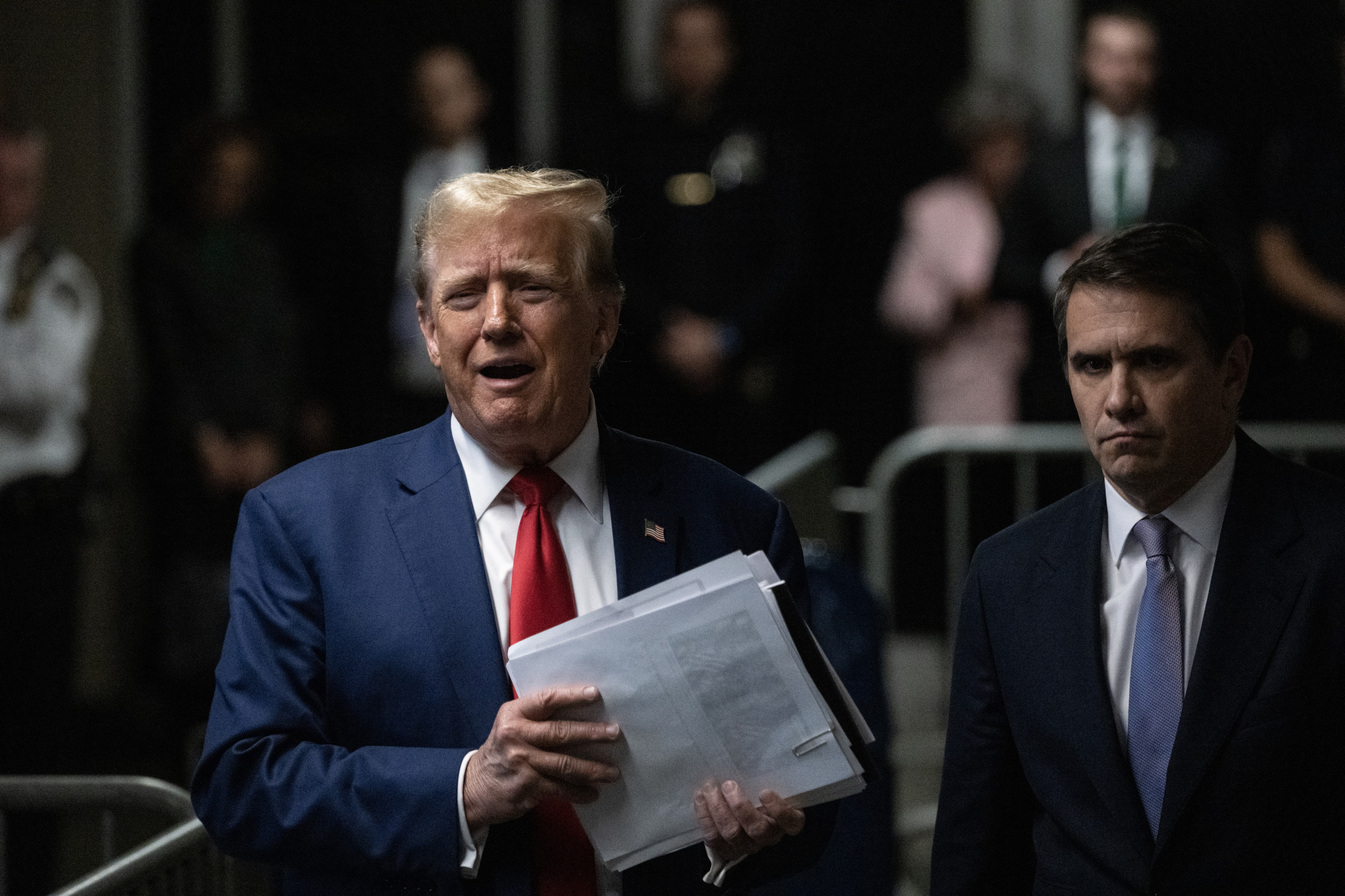
This article first appeared on the Defining Ideas blog on the Hoover Institution site.
On June 16, 2015, Donald Trump announced he was running for president of the United States. The announcement was greeted with less than enthusiasm by the mainstream press.
The Washington Post declared, "Trump faces an uphill battle to be taken seriously by his rivals, political watchers and the media"—and The New York Times announced his candidacy by pointing out that he was "brandishing his wealth and fame as chief qualifications in an improbable quest for the Republican nomination."
The Real Clear Politics aggregated numbers for June 17 had Trump at fewer than 3 percent or less than half the support for the next lowest candidate, Chris Christie, and well below Bush, Walker, Rubio, Paul and Cruz.
Within a month, he was at 15.0 percent, and on July 19, he passed Jeb Bush and has not looked back, reaching 26.5 percent on August 31, a number more than twice as high as the next highest potential nominee. Table 1 shows the rise of Trump over May to August in the Real Clear Politics Republican Poll averages.

In May, Trump was basically non-existent at below 2 percent and on August 31 he was at about 27 percent while Rubio, Walker, Paul, Christie and Perry supporters were down by at least 50 percent. Bush lost about one-third of his support while Cruz lost about one-fifth of his support.
Over this time slot, the only gainers beside Trump were Carson, who increased his support from about 8 percent to 12 percent, and Fiorina and Kasich, who went from essentially nothing to 6 and 5 percent, respectively. Showing these shifts, however, does not tell us where Trump voters came from because these polls do not interview the same individuals over time.
Much has been written on where his support is coming from, and the answers range from white evangelicals, the disaffected, tea partiers, the annoyed and the anti-establishment base of the Republican Party to moderate and liberal Republicans in Iowa and New Hampshire. That is, Trump's move from 2 percent to over 25 percent either came from other Republican candidates and/or voters who did not have a preference before Trump entered the race.
We can answer the question of where Trump got his support because from May 9 through June 9 of 2015, we had YouGov interview 1,418 Americans, of whom 608 (or 42.8 percent) were either Republican or leaning Republican.
The 43 percent YouGov poll result is consistent with the 42 percent Republican or leaning Republican that Gallup found in its May poll. YouGov reinterviewed these same people over August 18 through 20. YouGov also asked the participants who was their second choice for president, which allows us to see who would benefit from the end of the Trump campaign.
Prior to Trump's entry, the leading candidates were Bush, Cruz, Paul, Rubio and Walker. In May 2015, they had over 60 percent of the vote in the aggregated Real Clear Politics Republican nomination polls. Since regular Republicans are more likely to vote in primaries and attend caucuses than are leaning Republicans, we break the 608 Republican respondents into 471 regular and 137 leaning Republicans.
Looking at the pre- and post-Trump announcement reveals that among the top five candidates in May, Paul, Walker and Bush lost 18, 17 and 11 percent, respectively, of their supporters to Trump, while Rubio lost 21 percent and Cruz an astonishing 47 percent to Trump.
Among leaning Republicans, all candidates save Rand Paul (11 percent) lost over 20 percent to Trump, ranging from Walker's 34 percent to Cruz's 25 percent loss. Overall, among the top five in May, Bush was hurt the least and Cruz the most, though all lost votes in the double digits to Trump.
Among the candidates in May who weren't in the top five, Trump's entry cost them dearly among regular Republicans. Only one lost less than 20 percent of his support to Trump, Rick Santorum, and he lost 17 percent. Kasich, Jindal, and Carson lost roughly a quarter of their support to Trump, while Huckabee and Fiorina lost over one third to Trump.
Governors Christie and Perry lost over 60 percent of their regular Republican supporters, dropping Christie from over 5 percent to less than 3 percent and Perry from about 3 percent to less than 1.5 percent.
Leaning Republicans left Carson, Perry and Santorum at over about a third, with Perry at a 56 percent loss from his pre-Trump numbers. The other second-tier candidates in May lost from Kasich and Huckabee's one quarter to Carly Fiorina's zero percent.
Overall, Trump's support came about equally from the top five candidates, 42 percent, and the second-tier candidates, 38 percent, with the remaining 20 percent coming from those with "no preference" or "don't know" responses prior to June 2015.
Among those most likely to vote in the Republican nomination process, Trump took 40 percent from the leading candidates and 47 percent percent from the other 14 candidates, with the remaining 13 percent coming from those uncommitted before Trump. Among the top candidates, Cruz was hurt the most, while among the second-tier 14, Governor Perry suffered the greatest hit.
The demographics of Trump voters are interesting. Slightly over half of Trump supporters are female, about half are between 45 and 64 years of age with another 34 percent being over 65 years old and less than two percent younger than 30. One half of his voters have a high school education or less compared to 19 percent with a college or post-graduate degree. Slightly over one third of his supporters earn less than $50,000 per year while 11 percent earn over $100,000 per year.
In regard to ideology, 20 percent of his supporters report that they are liberal or moderate, with 65 percent saying they are conservative and 13 percent labeling themselves as very conservative. His support from those saying they are involved with the tea party movement is 30 percent—meaning that 70 percent of his supporters are not involved with the tea party.
In sum, his supporters are a bit older, less educated and earn less than Republican averages in the YouGov sample.
Over the course of the campaign for the nomination, candidates will drop out due to a lack of support, money, or interest—and their supporters will, in most cases, move to another candidate in the field.
Our poll also asked respondents whom their second choice for the nomination was, enabling us to ascertain which candidates will benefit as a result of being the second choice. Table 2 shows in order of magnitude which candidates are the most popular second choices for regular Republican identifiers.

The results show Carson, Rubio and Fiorina as the only candidates in double digits followed by Walker, Cruz and Trump all over 8 percent. The 8.2 percent shows that Trump is not the second choice of most Republicans and the sixth place finish here probably means that individuals are either for Trump or against him, and he can not expect to gain support as other candidates drop out of the race. In contrast Carson, Rubio and Fiorina can enhance their support over the course of the campaign.
In regard to Trump supporters, would his votes go back to the candidates from whence they came? The results for Trump supporters and their second choice are somewhat surprising. Only three candidates in the large Republican field get into double digits and just barely at that.
Ben Carson is the second choice for 13 percent of Trump backers, and Carly Fiorina is the choice of 10 percent, while only Jeb Bush of the pre-June five is at 10 percent. After these three candidates, second choices are widely spread, with the exception of Gilmore, Graham, Pataki, Jindal and Perry at roughly zero percent or within the error variance of zero. Senator Cruz, who lost the most support to Trump, is the second choice of only 9 percent of Trump supporters.
We also asked respondents whether they had a favorable or unfavorable opinion of each of the candidates, and the results are shown in Tables 3 (favorability) and Table 4 (unfavorability).

With regard to favorability, Carson, Rubio and Fiorina finish ahead of Trump with Carson at 71 percent "very favorable" or "favorable" and Rubio and Fiorina at 69 and 66 percent, respectively. Trump comes in with 61 percent favorability while Bush, Walker, Huckabee and Cruz all have over 60 if you add together "very" and "somewhat favorable" with all others under 50 percent.

While Trump does reasonably well on the plus side, it is the negative side of the question where he fades. Trump has a full 26 percent who view him very unfavorably and another 12 percent who find him somewhat unfavorable. Christie, Graham, Paul, Bush and Santorum are all over 33 on the combined "very" and "somewhat unfavorable" scale.
Those candidates with the lowest unfavorable scores are also those who did best on the favorable chart—Fiorina, Rubio and Carson have fewer than 15 percent saying they view them in a negative light; thus the conclusion that Fiorina, Carson, Rubio and possibly Kasich have some good will to build on as the campaign proceeds.
What do these results tell us about the Trump candidacy?
First, that most of his support comes from voters already following the race and not from newly inspired voters.
Second, his campaign drew from both the front-runners and the second-tier candidates and hurt Senator Cruz among the front-runners and Governor Perry among the second-tier candidates the most.
Third, his support comes from across the full range of Republican identifiers, but is slightly higher among those who are less well educated, earn less than $50,000 and are slightly older.
Fourth, tea party respondents were for Trump at slightly lower levels than the totals for Cruz and Fiorina, but higher than for the rest of the field.
Fifth, his candidacy has a large downside in that, of the entire field, he has by far the most unfavorables and he is not the second choice of very many Republicans; thus, he cannot expect to see a leap forward as other candidates drop out.
Carson first and then probably Fiorina look to gain the most as other candidates drop out of the race.
David Brady holds the Bowen H. and Janice Arthur McCoy Professor of Political Science in the Stanford Graduate School of Business and is the Davies Family Senior Fellow at the Hoover Institution. Douglas Rivers is a senior fellow at the Hoover Institution and a professor of political science at Stanford University. He is also the Chief Scientist at YouGov PLC, a global polling firm.
Uncommon Knowledge
Newsweek is committed to challenging conventional wisdom and finding connections in the search for common ground.
Newsweek is committed to challenging conventional wisdom and finding connections in the search for common ground.
About the writer
To read how Newsweek uses AI as a newsroom tool, Click here.






